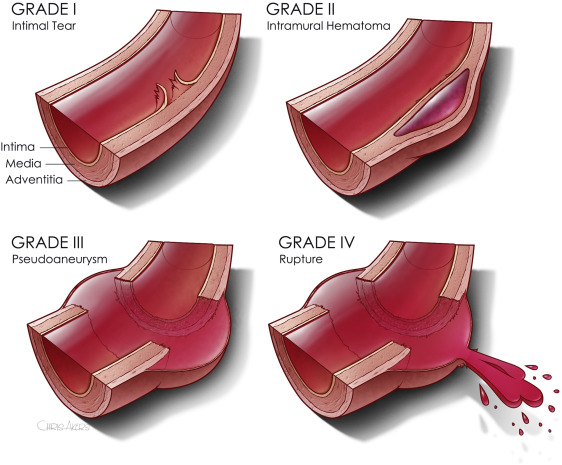Back braces have always confused me. There are so many types: TLSO, LSO, backpack, extension, and even the lowly abdominal binder can function as a brace. And I have never been able to predict which brace my spine colleagues accurately would prescribe for a specific condition or injury.
Many vertebral fractures can be treated non-operatively. And it seems intuitive that there would be some benefit from splinting the spine to limit the range of motion to enhance healing. So I would like to concentrate on some papers that examined the use of back braces on patients who underwent pedicle screw fixation of their thoracic and/or lumbar spine fractures.
I found two systematic reviews and a ten-year prospective clinical trial. First, the reviews.
The first was published in 2016 and examined papers comparing postop bracing vs. no postop bracing. It looked at loss of deformity correction, return to work, functional improvement, instrumentation failure rate, pseudoarthrosis, and postop complications. A total of 76 studies were included.
The average wear time for the braces was just over three months. There was no difference in pain, return to work, functional outcome, or instrumentation failure. Interestingly, there was a significant increase in the number of patients who lost kyphotic reduction from the procedure and a significant increase in the number of complications. Unfortunately, the authors did not break out specific complications other than wound infections. Although these were higher in the braced group (2.8% vs. 1.8%), this difference was not significant. One real positive for the brace: the number of pseudoarthroses was significantly less (2.4% vs. 6%).
The next review looked at postoperative bracing from a cost-effectiveness standpoint. It considered adverse events such as infections and hardware failure and examined a total of 1957 patients across 48 papers. Non-braced patients were somewhat older. Braced patients had significantly fewer reoperations for non-union or hardware failure (1.3% vs. 1.8%). There was no difference in wound dehiscence or infection. Overall, there was no cost benefit to applying a back brace in these patients after pedicle screw fixation.
The last paper was a prospective clinical trial that enrolled 144 patients randomized to brace or no brace after their surgical procedure. They underwent multiple postop evaluations to monitor quality of life, success of the fusion, pain, mobility, and return to previous activities.
Here are the factoids:
- Mean age was only 34 years, and only fractures of T11 to L5 were included
- Two-thirds of the injuries were due to falls, and most of the remaining ones were from car crashes
- Three-quarters were burst fractures, and the remaining were wedge or fracture-dislocation injuries
- There were no differences in early mobilization, residual pain, return to previous activities, quality of life, or success of the fusion after one year
The authors concluded that the use (or non-use) of a TLSO brace after pedicle screw fixation of these fractures does not affect treatment. They state that TLSO braces are not required in the postop period for these patients.
Bottom line: Interesting, yet slightly confusing. The systematic reviews show a significant increase in pseudoarthrosis in patients without braces. This was not seen in the prospective study. The discrepancy could be due to the quality of the papers included in the reviews or insufficient power in the prospective study. So it may be too early to fully know the difference. But it appears to be so small that the question of whether a brace is really necessary needs to be asked.
Most braces are expensive and uncomfortable. I have seen several patients in follow-up who basically stopped wearing their brace as soon as they were out of the hospital. And anecdotally, they did fine.
A large, multicenter study in progress in the Netherlands will analyze the same factors listed above. Unfortunately, the listing on clinicaltrials.gov indicates they are only recruiting 45 patients, which may not add much to what is already known due to low statistical power.
In the meantime, consider discussing with your spine surgeons reviewing the current literature on back bracing. It may be possible to reduce the number of eligible patients who take their brace home and use it as a chew toy for the dog.
References:
- Bracing After Surgical Stabilization of Thoracolumbar Fractures: A Systematic Review of Evidence, Indications, and Practices. World Neurosurg 93:221-228, 2016.
- Post-operative bracing after pedicle screw fixation for thoracolumbar burst fractures: A cost-effectiveness study. J Clin Neurosci 45:33-39, 2017.
- Evaluation of postoperative bracing on unstable traumatic lumbar fractures after pedicle screw fixation. Int J Burns Trauma 12(4):168-174, 2022.
- Is postoperative bracing after pedicle screw fixation of spine fractures necessary? Study protocol of the ORNOT study: a randomised controlled multicentre trial. NCT03097081. Listed in 2017, to be completed Nov 2026.

